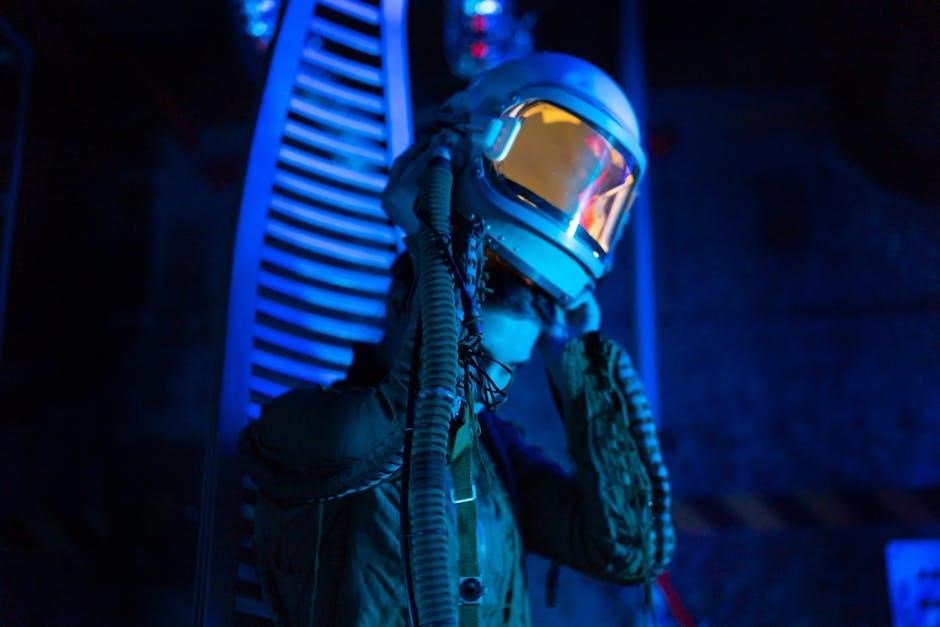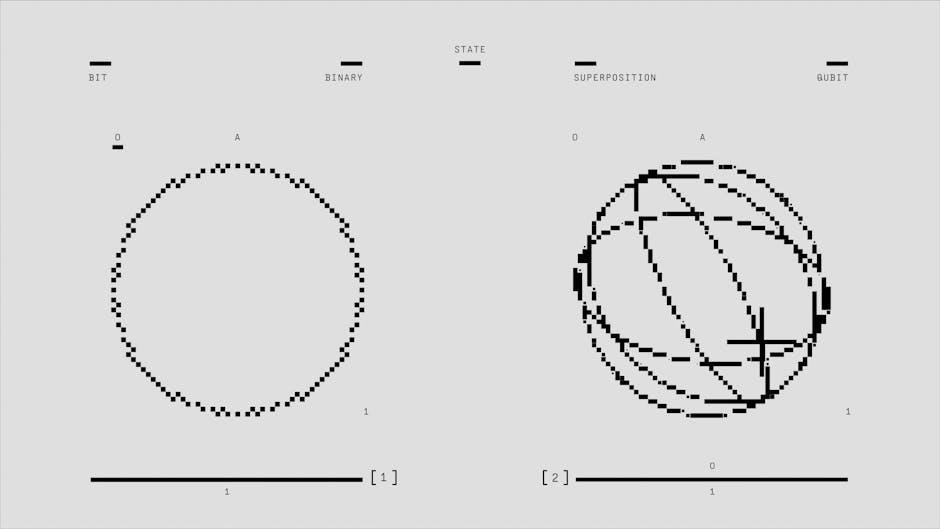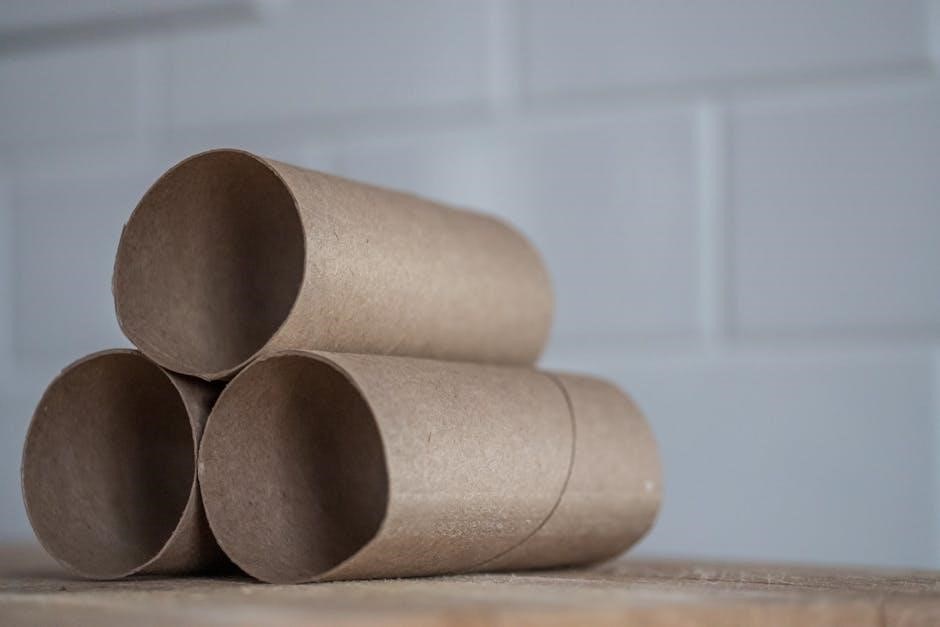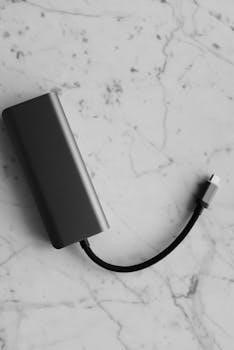Zero gravity toilets are specialized systems designed for waste management in microgravity environments‚ ensuring hygiene and functionality in space missions by addressing unique challenges of fluid dynamics and containment.
1.1 What is a Zero Gravity Toilet?
A zero gravity toilet is a specially engineered system designed to manage human waste in microgravity environments where traditional gravity-dependent toilets cannot function. It uses airflow‚ suction‚ and containment systems to direct and store waste effectively. Unlike Earth-based toilets‚ it relies on air pressure to prevent waste from floating away and requires careful user positioning and securing. This unique design ensures functionality‚ hygiene‚ and safety in space missions‚ addressing the challenges posed by the absence of gravity.
1.2 The Importance of Zero Gravity Toilets in Space Exploration
Zero gravity toilets are essential for maintaining hygiene‚ health‚ and crew morale during space missions. They prevent waste from floating freely‚ reducing contamination risks and ensuring a safe living environment. Proper waste management is critical in confined spacecraft‚ where health risks are heightened. These systems also support long-duration missions by efficiently managing resources and minimizing waste accumulation. Their reliability is vital for the success of space exploration‚ enabling astronauts to focus on their tasks without discomfort or distraction.

Understanding the Physics of Zero Gravity Toilets
Zero gravity toilets rely on airflow dynamics and suction to manage waste in microgravity‚ as traditional gravity-assisted flushing is ineffective. The system uses controlled air pressure to direct and contain fluids and solids‚ ensuring proper waste collection without relying on gravity. This principle is crucial for maintaining functionality and hygiene in space environments.
2.1 How Zero Gravity Affects Fluid Dynamics
In microgravity‚ fluids behave unpredictably due to the absence of gravity‚ forming spheres rather than flowing directionally. Surface tension dominates‚ causing liquids to cling to surfaces or float freely. This necessitates alternative methods for containment and directional control‚ as traditional gravity-assisted flow is nonexistent. Airflow becomes a critical tool for managing fluids‚ ensuring they are properly directed and contained within the toilet system. Understanding these dynamics is essential for designing effective zero-gravity waste management solutions.
2.2 The Role of Airflow and Suction in Waste Management
Airflow and suction are critical in zero-gravity toilets as they compensate for the lack of gravity to direct and contain waste. A controlled airflow system gently pulls waste into the toilet‚ ensuring it doesn’t float away. Suction then captures and stores the waste in specialized bags or compartments. This method prevents contamination and maintains hygiene in confined spaces. The airflow system also minimizes odors and ensures efficient waste collection‚ making it indispensable for space missions where traditional gravity-based systems fail.

Pre-Usage Instructions for Zero Gravity Toilets
Pre-usage instructions for zero gravity toilets ensure safe and effective operation in microgravity‚ preparing astronauts for the unique challenges of space sanitation by outlining essential steps and hygiene practices.
3.1 Preparing for Use: Safety Precautions
Before using a zero gravity toilet‚ ensure proper securing to prevent floating away. Conduct a visual inspection of all components‚ including hoses‚ valves‚ and restraint systems. Verify the suction mechanism is functional and waste containment bags are properly aligned. Sanitize hands and the toilet area to maintain hygiene. Familiarize yourself with emergency stop mechanisms and follow all mission-specific protocols. Proper preparation ensures a safe and efficient experience in microgravity conditions.
3.2 Familiarizing Yourself with the Toilet’s Components
Understand the zero gravity toilet’s components‚ including the main console‚ restraint system‚ and toilet seat. Locate the control panel for airflow and suction adjustments. Identify the waste collection bag or containment system and ensure it is securely attached. Familiarize yourself with the handholds or footrests for stability. Check the hygiene station‚ such as hand sanitizer or wipes‚ and the emergency stop button. Knowing each part ensures safe and effective use in microgravity conditions.

Step-by-Step Guide to Using a Zero Gravity Toilet
Mastering the use of a zero gravity toilet involves carefully following each step‚ from positioning to securing and activating systems‚ ensuring efficiency and hygiene in space environments.
4.1 Positioning Yourself Correctly
Positioning is critical in a zero gravity toilet. Align your body to the toilet’s opening‚ ensuring your feet are secured with footrests or straps to maintain balance. Slow‚ deliberate movements are essential to avoid drifting. Sit or stand as instructed‚ depending on the toilet’s design‚ and keep your back straight to facilitate proper waste direction. Adjustments may be needed to account for microgravity’s effects on your body’s orientation. Proper positioning ensures effective use and prevents discomfort or accidents.
4.2 Securing Yourself in Place
Securing yourself is vital in a zero gravity toilet to prevent drifting away. Use the provided harnesses‚ straps‚ or handholds to stabilize your position. Ensure all restraints are tightly fastened before use to maintain proper alignment with the toilet. In some models‚ footholds or safety bars may also be available to enhance stability. Double-checking your securement ensures safety and prevents accidental movement‚ which could disrupt the process or cause discomfort. Proper securing is essential for effective and hygienic use of the toilet system.
4.3 Using the Toiletry Bags or Containment Systems
Zero gravity toilets often use specialized toiletry bags or containment systems to manage waste effectively. Open the bag carefully and ensure it is securely attached to the toilet fixture to prevent floating. Position yourself to align with the bag‚ ensuring all waste is directed inside. After use‚ seal the bag tightly to prevent leakage. Follow the spacecraft’s specific protocols for handling and disposing of used bags‚ as improper disposal can lead to contamination. Proper use of these systems is crucial for maintaining hygiene and functionality in microgravity environments.
4.4 Activating the Suction Mechanism
To activate the suction mechanism‚ locate the control panel or lever and engage it firmly to initiate airflow. The suction ensures waste is drawn into the containment system. Activate the mechanism before use to prevent waste from floating away. Adjust airflow as needed‚ but avoid over-reliance on high settings‚ which may cause discomfort. Monitor the system’s status to ensure proper function. Proper activation is crucial for effective waste management and maintaining a clean environment in microgravity conditions.
4.5 Completing the Process and Disposal
After finishing‚ carefully disconnect from the suction mechanism and seal the waste bag to prevent leakage. Ensure all materials are contained and dispose of the bag in the designated compartment. Follow procedures for securing the toilet and resetting the system for the next user. Always check for any remaining waste to avoid contamination. Proper completion ensures hygiene and functionality for future use in the microgravity environment.
Maintenance and Cleaning of Zero Gravity Toilets
Regular maintenance and cleaning of zero gravity toilets are essential for functionality and hygiene in space‚ ensuring proper waste removal and sterilization of all components.
5.1 Daily Cleaning Procedures
Daily cleaning of zero gravity toilets involves using antimicrobial solutions to sanitize surfaces‚ ensuring proper disposal of waste bags‚ and checking for any blockages in the system. Crew members must wipe down all accessible areas with specialized microfiber cloths to prevent bacterial growth. Regular disinfection of high-touch components‚ such as handles and seals‚ is crucial to maintain hygiene. Cleaning should be performed after each use when possible‚ following strict protocols to avoid contamination and ensure optimal functionality of the toilet system.
5.2 Replacing and Disposing of Waste Bags
Replacing and disposing of waste bags in a zero gravity toilet requires careful attention to prevent contamination. After use‚ securely seal the waste bag using the provided closure mechanism. Disconnect the bag from the toilet system‚ ensuring no leakage. Store the sealed bag in a designated waste container with airtight sealing to prevent odor release. Follow mission-specific protocols for temporary storage and eventual disposal‚ ensuring compliance with safety and hygiene standards to maintain a clean and functional environment.
5.3 Checking and Maintaining Airflow Systems
Regularly inspect the airflow system to ensure optimal performance. Check for blockages‚ clean filters‚ and verify suction strength. Maintain proper airflow to prevent odor buildup and contamination. Test the system’s functionality before and after use to ensure reliability. Address any issues promptly‚ such as replacing worn-out parts or adjusting airflow settings. Proper maintenance ensures efficient waste management and prevents system failures‚ critical for hygienic and functional operation in microgravity environments.

Troubleshooting Common Issues
Troubleshooting zero gravity toilets involves identifying and resolving issues like clogs‚ suction failures‚ or malfunctioning restraints. Follow step-by-step procedures for quick and effective problem resolution.
6.1 Dealing with Clogs or Blockages
In zero gravity toilets‚ clogs occur when waste or debris obstructs airflow or suction. To resolve‚ use the toilet’s built-in tools‚ such as an airflow reversal feature or manual cleaning mechanisms. Always wear gloves and follow safety protocols. Check for foreign objects or improper waste disposal. If the issue persists‚ consult the system’s manual or contact mission support for assistance. Regular maintenance can prevent clogs and ensure smooth operation.
6.2 Resolving Suction Failures
Suction failures in zero gravity toilets can disrupt waste management. First‚ check the power supply and ensure the suction mechanism is activated properly. Verify airflow pathways for blockages and clean filters if necessary. If the issue persists‚ consult the system’s diagnostic manual or notify technical support. In emergency cases‚ switch to alternative waste containment methods until repairs are made. Regular maintenance of suction components is essential to prevent such failures during missions.
6.3 Handling Malfunctioning Harnesses or Restraints
If harnesses or restraints malfunction‚ ensure your safety first by securing yourself using alternative stabilizing methods. Inspect the harness for damage or misalignment‚ and refer to the user manual for repair guidance. Proper restraint functionality is critical in microgravity to prevent accidental movement and ensure effective toilet use. If the issue cannot be resolved immediately‚ notify support and avoid using the toilet until repairs are made to prevent accidents.

Health and Hygiene Considerations
Health and hygiene in space demand strict adherence to sanitation protocols to prevent infections. Proper hand washing‚ antibacterial wipes‚ and efficient waste disposal are crucial for maintaining cleanliness and preventing contamination.
7.1 Preventing Infections in Microgravity Environments
In microgravity‚ infections can spread more easily due to unique fluid dynamics and airborne pathogens. Regular hand hygiene with antibacterial gels‚ thorough cleaning of toilet surfaces‚ and proper waste disposal are essential. Astronauts must wear gloves when handling waste systems to minimize contact with potential contaminants. Additionally‚ ensuring proper ventilation and airflow in the toilet area helps reduce pathogen concentration. Routine sanitation checks and adherence to strict hygiene protocols are critical to maintaining a healthy environment in space.
7.2 Managing Personal Hygiene in Space
Personal hygiene in space requires careful routines due to microgravity’s impact on bodily functions. Astronauts use wet wipes and hand sanitizers to maintain cleanliness‚ as water is scarce. Daily hygiene routines include cleaning faces‚ hands‚ and bodies with specialized products. Biodegradable wipes are used for intimate care‚ and waste is stored in sealed bags. Proper disposal and ventilation systems prevent odor buildup. Maintaining personal hygiene not only prevents infections but also contributes to mental well-being and a fresh living environment in confined spaces.

Special Considerations for Prolonged Use
Prolonged use of zero gravity toilets requires careful waste containment‚ odor management‚ and attention to psychological well-being in confined spaces‚ ensuring hygiene and comfort over time.
8.1 Long-Duration Missions: Managing Waste Over Time
Managing waste during long-duration missions requires robust storage solutions and reliable containment systems to prevent overflow and maintain hygiene. Odor control and moisture management are critical to ensure a habitable environment. Crew members must adhere to strict protocols for waste disposal to avoid contamination and maintain system efficiency. Psychological factors‚ such as crew comfort and morale‚ also play a significant role in managing waste effectively over extended periods in confined spaces.
8.2 Psychological Factors: Using the Toilet in Confined Spaces
Using a zero-gravity toilet in confined spaces can pose psychological challenges. Privacy concerns arise due to limited space‚ and the unconventional setup may cause stress. The lack of a familiar bathroom environment can lead to discomfort. Crew morale can be affected by these factors‚ impacting team dynamics. Addressing these challenges involves designing systems that enhance privacy and comfort. Routine practices and training programs can help mitigate anxiety‚ ensuring astronauts adapt to these unique conditions effectively.

Emergency Procedures
Emergency procedures for zero-gravity toilets involve isolating the system‚ using backup containment methods‚ and ensuring crew safety during malfunctions. Immediate action is crucial to prevent contamination risks and maintain hygiene.
9.1 Responding to a Toilet Malfunction in Crisis Situations
In the event of a toilet malfunction‚ crew members must act swiftly to prevent contamination. Secure the area‚ isolate the system‚ and activate backup containment methods. Prioritize waste containment to protect the crew from exposure. Use manual systems or alternate waste bags if necessary. Alert the team and follow established emergency protocols to ensure safety and minimize disruptions. Document the incident for later analysis and prepare for system inspection or repair.
9.2 Alternative Waste Management Methods
When primary systems fail‚ alternative methods must be employed to maintain hygiene and safety. Contingency waste bags or manual collection systems can be used temporarily. Ensure proper sealing and storage to prevent contamination. Follow protocols for handling and labeling waste for later disposal. These methods are designed to mitigate risks and maintain crew health until the primary system is restored. Training in these procedures is essential for emergency preparedness in space missions.

Training and Preparation
Comprehensive training programs are essential for astronauts to effectively use zero gravity toilets‚ ensuring understanding of mechanics‚ safety protocols‚ and hygiene practices in microgravity environments.
10.1 Astronaut Training Programs for Zero Gravity Toilets
Astronauts undergo rigorous training to master zero gravity toilet usage‚ including simulations‚ hands-on practice‚ and emergency drills. Programs emphasize proper techniques‚ safety protocols‚ and waste containment procedures. Training also covers psychological adaptation to using such systems in confined‚ high-stress environments. The goal is to ensure seamless functionality and hygiene in microgravity‚ minimizing risks and ensuring mission success. These programs are tailored to address the unique challenges of space travel and long-duration missions.
10.2 Simulating Zero Gravity Toilet Use on Earth
Simulating zero gravity toilet use on Earth is essential for astronaut training. Methods include parabolic flights and specialized chambers that replicate microgravity conditions. These simulations allow astronauts to practice proper techniques‚ understand safety protocols‚ and master emergency procedures. Such training ensures that they are fully prepared to manage waste effectively and maintain hygiene during long-duration space missions‚ contributing to the success and safety of the crew.

The Future of Zero Gravity Toilets
The future of zero gravity toilets lies in advanced water recycling‚ energy-efficient designs‚ and innovative materials to enhance sustainability and performance for long-term space exploration missions.
11.1 Innovations in Space Toilet Technology
Future advancements in space toilet technology aim to improve efficiency‚ sustainability‚ and user comfort. Researchers are exploring water recycling systems‚ compact designs‚ and advanced materials to minimize waste and energy consumption. Innovations like urine-to-water conversion‚ automated waste sorting‚ and self-cleaning surfaces are being developed to support long-duration missions. Additionally‚ integrating smart sensors and AI for real-time monitoring and maintenance could revolutionize space sanitation. These innovations are critical for sustaining human presence in space and ensuring reliable waste management systems.
11.2 Sustainability and Recycling in Space Waste Systems
Sustainability and recycling are crucial in space waste systems‚ enabling water and resource reuse. Advanced filtration and chemical processing technologies convert waste into reusable materials. These systems reduce reliance on Earth-based supplies‚ enhancing mission longevity. Implementing closed-loop systems ensures minimal waste disposal and maximum efficiency. Such innovations are vital for sustaining long-term space exploration and habitation‚ particularly on Mars or the Moon.
Zero gravity toilets are vital for maintaining hygiene and waste management efficiency in space‚ essential for the success of long-duration missions and astronaut well-being always.
12.1 Summary of Key Points
Zero gravity toilets are engineered to function in microgravity‚ relying on airflow and suction for waste management. Proper positioning‚ securement‚ and use of containment systems are crucial for effectiveness. Daily maintenance‚ including cleaning and waste bag replacement‚ ensures hygiene and system efficiency. Understanding the physics of fluid dynamics in space and adhering to safety protocols are essential for successful operation. These toilets play a critical role in sustaining astronaut health and mission success in space exploration.
12.2 Final Tips for Effective Use
Always follow instructions carefully to ensure proper function and hygiene. Secure yourself firmly to prevent floating away. Use the correct toiletry bags and attach them securely to avoid leaks. Test the suction before use to confirm it’s working. Clean up thoroughly after each use to maintain system efficiency. Familiarize yourself with emergency procedures in case of malfunctions. Smooth operation relies on your attention to detail and adherence to guidelines. Remember‚ proper use is key to comfort and safety in microgravity environments.


